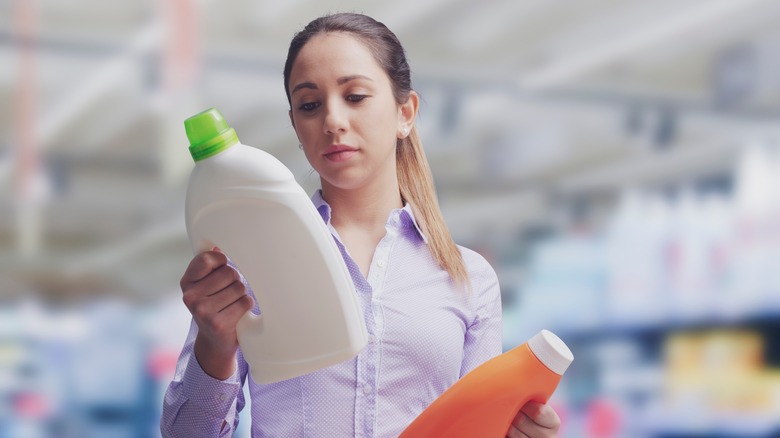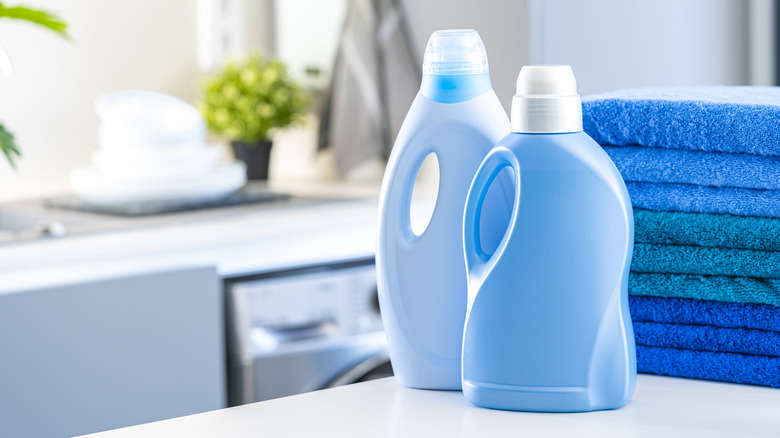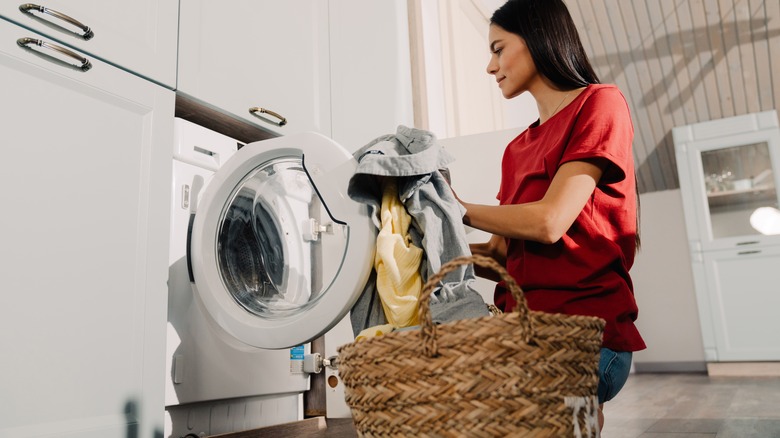The Big Difference Between Sanitizing And Disinfecting Your Laundry (And How To Do Each)
When navigating the laundry aisle of the supermarket, the numerous options can make it feel like a minefield. From detergents and fabric softeners to sanitizers and disinfectants, you may wonder what each one means and, more importantly, which ones you actually need. If your goal is to have laundry that is not only clean but also germ-free, two significant players emerge in your cleaning arsenal: sanitizers and disinfectants.
The Environmental Protection Agency (EPA) registers products with these labels as antimicrobial pesticides capable of eradicating harmful bacteria and viruses on various surfaces, including your clothes. However, it's essential to know that they are not the same. Although sanitizing and disinfecting may seem interchangeable, they serve different purposes in the laundry process and offer different levels of microbial elimination.
Using a sanitizer or disinfectant offers a more targeted and efficient cleaning approach than the usual one-size-fits-all approach. However, using these products effectively is crucial, especially when it comes to laundry. Differentiating between the two types of products is important for tailoring your laundry routine to your hygiene needs. The right product can significantly improve your clothes' overall hygiene. Nonetheless, picking the right product is where the challenge lies. In addition, you must also consider the laundry water temperature, wash cycle, and load size, as all these factors can influence the effectiveness of your sanitizing or disinfecting efforts.
How sanitizing differs from disinfecting
According to the EPA, sanitizers aim to eliminate bacteria, reducing them to a generally considered safe level as per public health guidelines. However, it's important to note that while sanitizers are effective against bacteria, they may not be as effective against viruses. Disinfectants, on the other hand, are the heavy-duty options in your cleaning arsenal, obliterating both bacteria and viruses. These are the go-to options when high levels of hygiene are non-negotiable.
It's crucial to know the difference between sanitizers and disinfectants, especially when eliminating viral infections is a top priority. Additionally, understanding the type of germs you're trying to eliminate is equally important. Are you dealing with everyday bacteria from common household activities, or are you trying to eliminate potent viral pathogens that could lead to illness? Armed with this knowledge, you can select the most effective product for your specific needs.
There are instances where a stronger defense is required, such as when you have a sick family member, when it's flu season, or when you've recently been in a high-risk environment like a hospital. In such cases, disinfecting your laundry can provide an additional layer of security, thanks to the disinfectant's broad microbial kill rate.
Same methods, different products: how to sanitize and disinfect your laundry
Interestingly, the methods used for sanitizing and disinfecting laundry are similar. Sanitizing involves using the hottest water that the fabric can tolerate. Likewise, disinfecting also involves the same process. After selecting the right laundry machine setting, you can then add a laundry disinfectant, sanitizer, or bleach, depending on your objective and fabric type. The final step is to dry your clothes in a high-heat setting to provide that extra layer of microbial elimination.
While the procedures are basically the same, the product you use is crucial. If you want to sanitize your laundry, choose products marketed as sanitizers. For a more rigorous level of cleanliness, i.e., disinfection, use disinfecting products that often contain stronger active ingredients capable of eliminating viruses in addition to bacteria. You must be meticulous about following product instructions. Using a strong product on delicate fabric can cause damage. Always pay close attention to the care labels on your clothes and the directions on your product. Applying the right amount of product for the optimum time to achieve the desired level of sanitation or disinfection is key. These details are usually specified on the product label and should be followed rigorously to ensure effectiveness and fabric safety.


